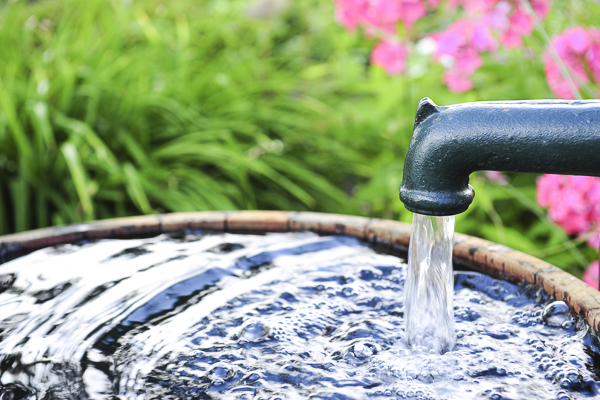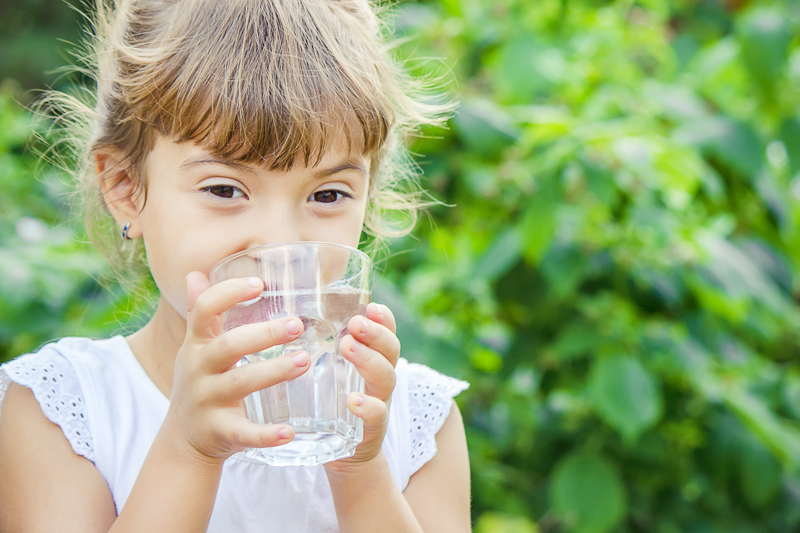A daily enjoyment: What is clean water worth?

Water is essential to life. We use it for drinking, cooking, and swimming, but it’s also used in many ways that we don’t always see—to grow our food, manufacture our goods, and keep our businesses running smoothly.
Because of its seeming abundance on Earth and the ubiquity of water in everyday life, it’s easy to forget that access to fresh water is limited. In fact, less than one percent of the Earth’s water is available for human use. The rest is either salt water found in oceans, fresh water frozen in the polar ice caps, or too inaccessible for practical usage, according to the Environmental Protection Agency (EPA).
World Water Day, held annually on March 22, is a reminder that fresh water is a scarce resource. It’s a chance to reflect on our relationship with water and consider ways to take action on water-related issues including water scarcity, water pollution, and the impacts of climate change.
Cathy Kling, a Tisch University Professor in the Dyson School of Applied Economics and Management and faculty director at the Atkinson Center for a Sustainable Future, has dedicated her career to studying the value of clean water and how this information can be used to enact change in the world.
An economist’s perspective on clean water legislation
Kling grew up with an appreciation for nature from an early age. She remembers taking weekend trips with her family to local lakes and rivers where they’d fish, swim, and picnic. “It was very much a part of my upbringing to spend time outdoors and almost always in places near water,” says Kling.

When she got to college, Kling became fascinated with the study of economics and how it influences public policy. Then, a lightbulb went off when she discovered the subfield of environmental economics.
“I really liked the economic way of thinking and the discipline of having to realize that there were trade-offs,” says Kling. “We can’t have everything we want for free. We have to make informed, wise decisions, and the idea that I could study and contribute information to help make better decisions related to the environment, and particularly water quality issues, was super exciting to me.”
Today, Kling chairs the Water Science and Technology Board of the National Academy of Sciences and has been a member of six National Research Council studies. She served as president of the Association of Environmental and Resource Economists, has held editorial positions at 10 economics journals, and has received seven awards from professional associations for her research.
Kling’s water-related research focuses on the value of water quality in the context of what people would be willing to give up to get improved water quality or accept lower water quality. “Economists study the value people put on water quality because it doesn’t get properly accounted for in the free market and we need policy to address it,” says Kling. And in order for public policy to sufficiently address it, “we need to know how much it’s worth to people to spend money, government money or private money, to improve the water and to prevent pollution—because it’s costly to do that.”
Measuring the missing benefits of clean water initiatives
In a recent study published in Proceedings of the National Academy of Sciences, Kling and a team of researchers from the University of California, Berkeley and Iowa State University set out to examine the economics of clean water. After reviewing about 20 recent evaluations of clean water policies, the findings were surprising: In the vast majority of cases, the estimated costs of these initiatives far outweighed the benefits. How could this be?
“It is certainly possible that the benefits have simply not exceeded the costs,” says Kling. “But when we looked more carefully at the studies, we realized that there’s a lot of categories of types of benefits that were not included. And so, our sense is that there are missing benefits that we simply haven’t been able to measure and quantify and therefore, can’t include properly in those sorts of cost-benefit analyses.”
In order to address this challenge, Kling set out on a mission to better understand what sources of value people get from clean water in local lakes, streams, and rivers, and how to quantify those benefits. Aside from the obvious benefits of cleaner drinking water, what other societal benefits were missing?
“One example is that when water gets cleaner, more people have access to clean local rivers and streams—just like my growing up fishing and hiking along rivers and streams,” says Kling. Improvements to the ecosystem make these natural habitats more enjoyable, and therefore more valuable to people who wish to experience them. But how can these intangible benefits be measured?

Kling and her colleagues look at people’s observed behavioral patterns to measure how much they value clean water and more natural conditions. “If you drive further on a Saturday to get to a cleaner lake, that tells us how much more you’re willing to spend to get cleaner water,” says Kling. “And if you had cleaner water, you’d be able to save all the time you spent driving a further distance and money on gasoline, and those are real measures of economic value. And we need those kinds of numbers and values to add to the benefit ledger in order to fully value these.”
To put this method into practice, Kling is leading a team of economists and ecologists on a new project for the EPA. “The EPA realizes that they don’t have good benefits numbers, and they want to address this,” says Kling. “We were funded to do some very detailed studies of the value people place on improved water quality in local rivers and streams, with the main focus on those ecological aspects.”
In the past, studies have primarily focused on specific uses of freshwater habitats for activities like fishing, boating, and swimming. However, the value of just being in an environment that is more natural and biodiverse has often gone underrepresented, she says. “That’s the component we’re really trying to get a better handle on by talking to people and listening to them describe what it is that they like or don’t like about a particular natural habitat,” says Kling. “Then, we’re doing some work to estimate the trade-offs they’re willing to make for improved access and improved natural habitats around them.”
Changing public perception and policy
Kling’s research has shown her just how much people care about experiencing fresh water and enjoy it in their everyday lives, and yet, how easy it is to take it for granted. “It’s not a giant thing,” she says. “It’s not your once every five years trip to Europe or something where you save a lot. But it’s a daily enjoyment. And that’s really what we’re trying to get a better handle and understanding of is how much is that worth to people? A little bit or a lot?”
One of the most rewarding aspects of Kling’s work is the power it has to shape public discourse and influence public policy regarding the social cost of water pollution. After all, policies are made based on the ability to quantify these types of costs and benefits. “If we don’t have these numbers, then we are not using our federal and state dollars necessarily as efficiently, or as wisely, as we should,” says Kling.
When people have access to accurate numbers, they’re able to engage in a more informed debate about the issue. “Partly, this is a way for people to talk about and recognize that there are damages that come from pollution,” she says. “It can be used to motivate behavior. It can be used to motivate change.”

